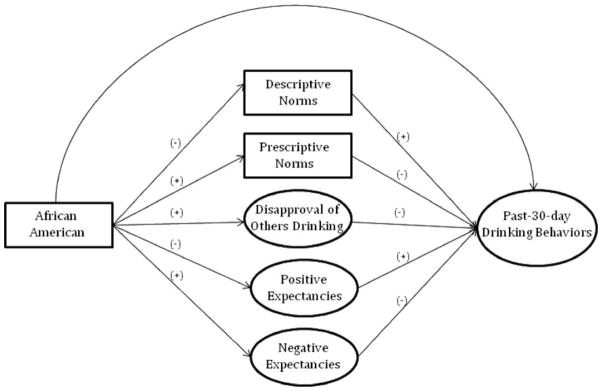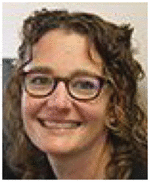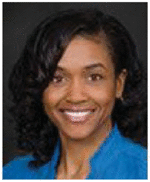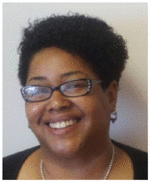Abstract
This study, funded by the National Institute on Alcohol Abuse and Alcoholism, examines psychosocial mediators to explain discrepancies in past-30-day drinking between African American and White college student drinkers in the United States. Between 2008 and 2010, 5,845 college drinkers completed an online survey about their alcohol use. Using latent variable structural equations modeling, we investigated the relationships between ethnicity, drinking beliefs, and students’ past 30-day alcohol use. Drinking beliefs—i.e., positive expectancies, perceived norms, and disapproval of alcohol use—fully mediated the relationship between ethnicity and drinking behaviors. Study limitations and directions for future research are discussed.
Keywords: ethnicity, college students, alcohol use, drinking beliefs, African American
INTRODUCTION
Problematic alcohol consumption is an important threat to college student health in the United States. Over 44% of college students drink heavily (Wechsler et al., 2002), an estimate that has shown little sign of decline despite efforts at prevention (Hingson, Zha, & Weitzman, 2009). Although prevalent heavy drinking among college students is well documented in the literature, ethnic differences in problematic consumption exist, illustrating that not all college students experience the same level of risk (Peralta & Steele, 2009). Wechsler and Kuo (2003) examined the extent to which college student demographics influence the prevalence of binge drinking on campus. They found that previous drinkers and students at risk of binge drinking were less likely to binge drink at colleges with large minority populations, raising questions about the culture of drinking among ethnic minority students. In particular, it has been reported that African American students drink alcohol much less frequently and heavily than their white student counterparts (Lawrence, Abel, & Hall, 2010; Madison-Colmore, Ford, Cooke, & Ellis, 2003; O’Malley & Johnston, 2002; Paschall, Bersamin, & Flewelling, 2005).
Despite considerable interest in determining why college students drink, differences between African American and White student drinking patterns in the college context remain largely underexplored. Important questions still remain regarding why these differences exist. The purpose of the present study is to examine psychosocial mediators identified in the general college drinking literature that may help to explain discrepancies between White and African American student drinking. A mediational model specifying these relationships is in Figure 1.
FIGURE 1.

Conceptual model.
The model hypothesizes that beliefs about drinking may influence the extent to which college students drink (Borsari & Carey, 2001). For example, the relationship between alcohol expectancies and alcohol use is well documented in the literature, with a consideration of how positive and negative expectancies differentially relate to problematic and nonproblematic patterns of college drinking (Borsari & Carey, 2001). We hypothesized that African American students would report fewer positive and more negative expectancies from drinking compared to White students. These beliefs, in turn, may affect student drinking behaviors. With regard to normative beliefs, research suggests that social norms have a strong effect on college student drinking. It is argued that students typically overestimate both the extent to which peers drink as well as peer approval of alcohol use, contributing to the normalization of alcohol use on campus. These two types of social norms are referred to as descriptive and injunctive norms (Borsari & Carey, 2001). We hypothesized that African American students would report less drinking among their friends (descriptive norms) and more disapproval from their friends about their own alcohol use (injunctive norms) compared to White students. Lastly, attitudes about drinking influence the extent to which college students drink (Bachman, O’Malley, Schulenberg, Bryant, & Merline, 2002). Personal attitudes are represented by how much an individual approves or disapproves of heavy alcohol use. We hypothesized that African Americans students would report more disapproval for alcohol use than White students.
METHODS
This article reports on an exploratory analysis of data collected between 2008 and 2010 for a randomized controlled trial designed to evaluate the effectiveness of an online alcohol prevention program for first year college students. A more complete description of the study methodology can be found elsewhere (Paschall, Antin, Ringwalt, & Saltz, 2011). Survey participants included 5,845 randomly selected first and second year college students from 30 universities. The sample for the present analyses is an independent subsample of past 12-month drinkers between the ages 18 and 23 across four waves of data collection. The survey included measures on drinking behaviors during the past 30 days; demographic and descriptive information, including student’s grade point average (GPA) and living situation; and drinking beliefs, including positive and negative alcohol expectancies, descriptive and prescriptive alcohol norms, and personal attitudes about heavy alcohol use. All study procedures were approved by the Pacific Institute for Research and Evaluation’s Institutional Review Board.
Measures
Drinking Behaviors
Four survey items were used as indicators for a latent measure of past 30-day drinking behavior: past 30-day drinking frequency, average quantity, greatest number of drinks consumed on a single day, and frequency of binge drinking (defined as five or more drinks for males and four or more drinks for females; NIAAA [National Institute on Alcohol Abuse and Alcoholism], 2004).
Individual Characteristics
Gender, age, place of residence, and college GPA have all been associated with college drinking and therefore were included in the analysis as controls. Additionally, because this is an exploratory analysis using a dataset designed to evaluate the effectiveness of an online alcohol prevention program, we controlled for the random assignment of students to either intervention or control conditions.
Expectancies
Nine standard indicators were combined to form a single measure of positive expectancies. On a four-point Likert scale, students reported the likelihood of each of the following drinking outcomes related to drinking three or four alcoholic beverages: feeling relaxed, feeling happy, worrying less about problems, feeling more confident, finding it easier to express feelings, feeling less shy, feeling more friendly, and feeling braver to talk to people. Similarly, nine indicators were combined to form a single measure of negative expectancies. Using the same four-point Likert scale, students also reported the likelihood of the following outcomes related to drinking three or four alcoholic beverages: getting into trouble with police, harming their health, getting a hangover, doing something they would regret, feeling sick, getting into trouble with parents, feeling out of control, getting into fights, and feeling clumsy.
Perceived Norms
Two measures were used to assess descriptive norms. First, students reported the frequency with which they believed their close friends consumed alcohol over the past 30 days: never, once, twice, 3–5 times, 6–9 times, or 10 or more times. Second, students were asked to report, on average, how many alcoholic drinks their friends typically consumed at a party, with 10 response options ranging from none to 21 or more. Z-scores were calculated in order to create a single mean score representing descriptive norms. Additionally, two questions were used to calculate a mean score for prescriptive norms. Using a five-point Likert scale ranging from strongly approve to strongly disapprove, students were asked to report how they believed their closest friends would feel if they (a) consumed one or two alcoholic beverages a day and (b) got drunk occasionally.
Personal Attitudes
Four measures were used to assess attitudes about alcohol use, using a five-point Likert scale ranging from strongly approve to strongly disapprove. Students were asked to report how they would feel about (a) their close friends having one or two alcoholic beverages every day, (b) their close friends having five or more drinks in one sitting, (c) people at least 18 years old consuming one or two drinks nearly every day, and (d) people at least 18 years old having five or more drinks in one sitting. A single mean score was calculated for disapproval of alcohol use.
Analysis
Latent variable structural equations modeling analyses were used to test our conceptual model and to investigate the relationships between ethnicity (i.e., African American vs. White), drinking beliefs (i.e., descriptive norms, prescriptive norms, disapproval of others’ drinking, positive drinking expectancies, and negative drinking expectancies), and students’ past-30-day alcohol use, taking into account various individual characteristics (e.g., GPA, gender, and age). The latent structures for the measures of disapproval of others’ drinking, positive expectancies, negative expectancies, and past-30-day alcohol use were examined using maximum likelihood confirmatory factor analysis (CFA). All other variables included in the model were single-item observed variables. All structural paths depicted in this conceptual model were included at the first stage of the analyses as were correlations among disturbance terms for drinking belief variables at the same level in the model. Ethnicity and all of the individual characteristics were allowed to freely covary with one another. Lagrange multiplier (LM) tests and Wald tests were used to help modify the model. Paths were added only if they were consistent with previous research or theory. The structural equations analyses were conducted using the maximum likelihood estimator in EQS 6.1 (Bentler, 1985). Because the data were not normally distributed, robust estimates of the standard errors and fit statistics were obtained. The maximum likelihood-based comparative fit index (CFI) and root mean squared error of approximation (RMSEA) were the primary measures used to evaluate model fit (Sobel, 1982). A CFI value >.90 and an RMSEA value ≤.06 were considered an indication of a good model fit. Indirect effects were estimated as the products of the relevant paths. Standard errors and significance tests for the indirect effects were obtained with the procedures implemented in EQS using the Sobel approach (Sobel, 1982). Finally, standard errors of the final model were inflated to adjust for the clustering of observations within schools, using a standard design effect formula that is the product of the cluster size (the average number of past-12-month drinkers per school each year) and the average intraclass correlation of the past-30-day drinking measures (.03; Eldridge, Ashby, & Kerry, 2006).
RESULTS
Descriptive Statistics
Sample characteristics can be found in Table 1. Three hundred and ninety-four African American students and 5,451 White students comprised the total sample for this study. The average age of respondents was 18.5 years old, approximately 39% were male, and most respondents lived in University dormitories (~84%). Significant differences were found between African American and White students on most study variables including drinking beliefs, positive and negative expectancies, prescriptive and descriptive norms, and disapproval of other’s drinking. Cohen’s effect size values (d = .20 to .52) suggested a small to moderate effect of ethnicity on the mediators included in the model.
TABLE 1.
Sample characteristics by ethnicity, mean (SD)
| Variable | Total (N = 5,845) | African American (N = 394) | White (N = 5,451) | Cohen’s d (CI) |
|---|---|---|---|---|
| Age | 18.5 (0.76) | 18.63 (0.91)* | 18.53 (0.75) | .13 (.11, .15) |
| Gender (male, %) | 39.32 | 35.03 | 39.63 | |
| Dorm (living in dorm, %) | 84.57 | 77.66** | 85.07 | |
| GPA | 3.30 (0.57) | 3.00 (0.61)** | 3.32 (0.56) | .57 (.55, .58) |
| Past-30-day drinking behaviors | ||||
| Drinking frequency (days) | 4.79 (4.90) | 3.19 (4.29)** | 4.90 (4.92) | .35 (.23, .48) |
| Greatest number of drinks | 6.03 (5.30) | 3.50 (4.37)** | 6.22 (5.31) | .52 (.38, .65) |
| Average number of drinks | 3.70 (3.12) | 2.07 (2.13)** | 3.76 (3.15) | .55 (.47, .63) |
| Binge drinking (days) | 2.17 (1.39) | 1.58 (1.06)** | 2.20 (1.41) | .45 (.41, .48) |
| Positive expectancies | 3.23 (0.69) | 3.00 (0.81)** | 3.25 (0.68) | .36 (.35, .38) |
| Negative expectancies | 1.74 (0.64) | 1.86 (0.77)** | 1.73 (0.63) | .20 (.19, .22) |
| Injunctive norms | 3.23 (0.80) | 3.57 (0.86)** | 3.21 (0.79) | .45 (.43, .47) |
| Descriptive norms | 0.00 (0.88) | −0.43 (0.90)** | 0.03 (0.87) | .52 (.51, .55) |
| Disapproval of others drinking | 3.72 (0.86) | 4.00 (0.82)** | 3.70 (0.86) | .35 (.33, .37) |
p < .05,
p < .00.
Structural Equations Modeling
Measurement Model
To determine if the latent structures of the measures conform to expectations, the latent structures for the measures of disapproval of others’ drinking, positive expectancies, negative expectancies, and past-30-day alcohol use were examined using maximum likelihood CFA. To improve the model fit, on the basis of the LM tests, we allowed covariances between the errors for (1) the disapproval of alcohol use measures of close friends’ and adults’ daily drinking, (2) the positive expectancy measures of feeling relaxed and happy, (3) the negative expectancy measures of getting into trouble with police and harming your health, and (4) the negative expectancy measures of getting a hangover and feeling sick to your stomach. Table 2 presents the standardized and unstandardized factor loadings of indicators of the latent variables. The final measurement model fit the data well [Robust CFI = .92, RMSEA = .060 (90% CI = .059, .062)] and was used as the basis for the latent variable structural model.
TABLE 2.
Measurement model
| Indicator | Standardized factor loading | Unstandardized factor loading | Robust SE | Robust t |
|---|---|---|---|---|
| Disapproval of others’ drinking | ||||
| Close friends having one or two drinksa nearly every day | .46 | 1.00 | ||
| Close friends having five or more drinks in one sitting | .94 | 1.97 | .06 | 32.59 |
| People 18 and over having one or two drinks nearly every day | .47 | .99 | .02 | 45.96 |
| People 18 and over having five or more drinks in one sitting | .88 | 1.85 | .06 | 31.42 |
| Positive expectancies | ||||
| Feel more relaxeda | .61 | 1.00 | ||
| Feel happy | .72 | 1.150 | .02 | 60.42 |
| Worry less about problems | .70 | 1.28 | .03 | 46.99 |
| Feel more confident or sure of yourself | .79 | 1.50 | .04 | 42.16 |
| Have an easier time expressing your feelings | .77 | 1.50 | .04 | 40.30 |
| Feel less shy | .82 | 1.50 | .04 | 40.14 |
| Feel more cheerful | .87 | 1.52 | .03 | 44.05 |
| Feel more friendly | .89 | 1.51 | .03 | 44.20 |
| Feel braver about talking to people | .85 | 1.56 | .04 | 41.39 |
| Negative expectancies | ||||
| Get into trouble with policea | .63 | 1.00 | ||
| Harm your health | .69 | 1.22 | .02 | 49.84 |
| Get a hangover | .69 | 1.40 | .04 | 38.29 |
| Do something you would regret | .78 | 1.42 | .03 | 41.33 |
| Feel sick to your stomach | .74 | 1.48 | .04 | 37.20 |
| Get into trouble with your parents | .58 | 1.16 | .03 | 36.73 |
| Feel out of control | .81 | 1.47 | .04 | 41.21 |
| Get into fights or shoving matches | .56 | .71 | .02 | 31.15 |
| Feel clumsy | .62 | 1.31 | .04 | 32.83 |
| Past-30-day drinking behaviors | ||||
| Number of days had at least one drinka | .66 | 1.00 | ||
| Greatest number of drinks | .95 | 1.56 | .04 | 43.46 |
| Average number of drinks on any day | .89 | .86 | .02 | 37.00 |
| Frequency of heavy episodic drinking | .80 | .35 | .01 | 54.54 |
Unstandardized factor loading was fixed at 1.00. All factor loadings are statistically significant (p < .05).
Structural Model
The hypothesized fully mediated model marginally fit the data, Satorra–Bentler χ2 (492, N = 5,845) = 9,460.71, p < .001, Robust CFI = .90, RMSEA = .056 (90% CI = .055, .057). The LM tests indicated that the model fit could be improved by allowing covariance between errors for number of drinks in the past 30 days and binge drinking. Also, on the basis of a nonsignificant Wald test, the paths between intervention and past-30-day alcohol use and age and past-30-day alcohol use were dropped from the model. Overall, this model fit the data well, Satorra–Bentler χ2 (491, N = 5,845) = 8,850.78, p < .001, Robust CFI = .91, RMSEA = .054 (90% CI = 0.53, .055). Table 3 displays the unstandardized and standardized parameters and associated standard errors and test statistics. Standard errors in Table 3 were inflated to adjust for the clustering of observations within schools.
TABLE 3.
Results from the final structural model
| Dependent variables predictors | Standardized coefficient | Unstandardized coefficient | SEa | t ratio |
|---|---|---|---|---|
| Past 30-day drinking behaviors | ||||
| Descriptive norms | .40 | 1.55 | .15 | 10.33* |
| Injunctive norms | −.05 | −.22 | .15 | −1.47 |
| Disapproval of others’ drinking | −.35 | −2.30 | .30 | −7.70* |
| Positive expectancies | .07 | .51 | .20 | 2.55* |
| Negative expectancies | −.04 | −.30 | .20 | −1.50 |
| GPA | −.03 | −.19 | .15 | −1.30 |
| Male | .09 | .61 | .17 | 3.60* |
| Dorm | .07 | .64 | .25 | 2.56* |
| African American (R2 = .51) | −.03 | −.45 | .32 | −1.41 |
| Descriptive norms | ||||
| African American (R2 = .02) | −.13 | −.46 | .12 | −3.83* |
| Injunctive norms | ||||
| African American (R2 = .01) | .11 | .36 | .10 | 3.6* |
| Disapproval of others drinking | ||||
| African American (R2 = .02) | .13 | .26 | .07 | 3.71* |
| Positive expectancies | ||||
| African American (R2 = .01) | −.09 | −.18 | .07 | −2.57* |
| Negative expectancies | ||||
| African American (R2 = .002) | .05 | .09 | .07 | 1.29 |
Direct Effects
Past-30-Day Alcohol Use
As indicated in Table 3, past-30-day alcohol use was directly and positively related to descriptive norms and positive expectancies. It was inversely related to disapproval of other’s drinking. With regard to the individual characteristics, being male and living in dorm were positively related to past-30-day alcohol use.
Drinking Beliefs
Except for negative expectancies, direct effects were found from being African American to personal drinking beliefs (see Table 3). All of these effects were consistent with our hypotheses. Specifically, being African American was inversely related to descriptive norms and positive expectancies. Conversely, being African American was positively related to prescriptive norms and disapproval of others’ drinking.
Indirect Effects of Drinking Beliefs
The analyses suggest that students’ drinking beliefs may serve as mediators between ethnicity and past-30-day alcohol use. Students’ ethnicity was indirectly and inversely related to past-30-day alcohol use through decreased descriptive norms and decreased positive expectancies. Ethnicity was also related to 30-day alcohol use through increased disapproval of others’ drinking. Overall, drinking beliefs entirely mediated the effect of ethnicity on drinking behaviors (β = −.11, p < .05).
STUDY LIMITATIONS
Results should be interpreted in light of the following limitations. First, this study is exploratory in nature in that we capitalized on an existing dataset of college drinking from a study that was designed to evaluate the effectiveness of an online alcohol prevention program. Additionally, standard measures of drinking beliefs, while commonly used in the literature, may not be appropriate to understand beliefs among diverse populations. For example, qualitative research has suggested that many African American students’ negative expectancies about drinking are related to concerns about being further marginalized if they were to participate in drinking environments (Peralta, 2010). Perhaps this explains why our analyses revealed no direct effect from African American ethnicity to negative expectancies. Finally, the cross-sectional design precludes causal interferences about the relationships that were found. For example, it is possible that alcohol use affects perceived norms rather than the other way around. That is, students who use alcohol also tend to be friends with drinkers.
DISCUSSION
The current study examined psychosocial mediators identified in the general college drinking literature to help shed light on discrepancies between White and African American student drinking. Results of this study suggest that drinking beliefs—in particular positive expectancies, perceived norms, and disapproval of alcohol use—fully mediated the relationship between ethnicity and past-30-day alcohol use in a large sample of college students in the United States, supporting our hypotheses about the divergent ways in which drinking beliefs influence alcohol use behaviors for African American and White students. Negative expectancies and injunctive norms did not predict drinking in our sample nor did we observe any direct effect from African American ethnicity to negative expectancies. Very little literature has investigated reasons for ethnic variation in alcohol use during the college years. While this study has identified significant ethnic differences in drinking beliefs, more research is needed to understand why drinking beliefs may vary by ethnicity.
Previous research has suggested that African American college students, who identify strongly with their ethnicity, engage in less drinking than those who do not report a strong sense of ethnic identity (Pugh & Bry, 2007; Smith, Phillips, & Brown, 2008). For example, Smith and colleagues (2008) investigated the role of ethnic identity in predicting alcohol use among African American students while also considering the mediating role of religiosity. They found evidence supporting a direct negative effect between some aspects of ethnic identity and alcohol use, as well as partial evidence suggesting a mediating role of religiosity when only certain aspects of ethnic identity were considered. It is possible then that ethnic identity and religiosity may influence African American drinking beliefs, which in turn affect their alcohol use behavior.
Others have considered how experiences with discrimination influence drinking patterns among African American college students. In a qualitative study of college student drinking, Peralta and Steele (2009) found that social structural conditions on predominately White college campuses may explain drinking pattern variations between African American and White students. For instance, African American students considered themselves to be isolated from predominately “White” spaces, which presented barriers to participating in college student drinking culture. Furthermore, African American students reported avoiding drinking for fear that losing their inhibitions would contribute further to racism and prejudice. As before, these factors may explain the relationships we found among ethnicity and drinking beliefs and behaviors.
The existing literature also suggests that many college students age out of drinking after college (Godette et al., 2009). The extent to which this is true for African American graduates, however, is unclear. Though African Americans, in general, are less likely to drink heavily, they are more likely to experience social consequences (e.g., fights, drinking and driving, arrests, intimate partner violence, and missing school or work) related to alcohol use later in life (Godette et al., 2009). That being said, understanding what protects African American college students during college and why may have important implications for preventing alcohol-related problems later on.
Some directions for future research include the following. First, it is well established in the social science literature that cultural meanings of alcohol have an important influence on drinking practices (Douglass, 2003; Hatzenbuehler, Corbin, & Fromme, 2011; Peralta, 2010; Wilson, 2005). Future research should investigate how distinct cultural meanings of drinking may operate in the college context, influencing African American drinking beliefs and therefore drinking practices. Additionally, next steps might include documenting how the experience of being an ethnic minority on a college campus may influence the drinking beliefs and practices of African American students. Exploratory research, for example, suggests that experiences with racism on predominantly White campuses influence African American students’ drinking practices, though studies conflict on the direction of the impact (Hatzenbuehler et al., 2011; Peralta, 2010). Relatedly, a valuable research direction may be to compare the drinking patterns of African American students at predominately White campuses versus African American students at Historically Black Colleges and Universities to investigate to what extent drinking beliefs and practices vary. Another direction for future research lies in the development of culturally appropriate measures for drinking beliefs for diverse populations, which may also help to reveal reasons for ethnic variation in drinking patterns. Finally, research should follow African American students longitudinally to assess to what extent their drinking patterns change after graduation. The question remains about whether African American students have a higher risk of alcohol-related problems after the protective period of college.
GLOSSARY
- Descriptive norms
Descriptive norms are a type of social norm that signals the actual behavior of group members
- Expectancy theory
Expectancy theory suggests that the outcomes perceived to be associated with a particular behavior motivate a person to select one behavior over other behaviors
- Injunctive norms
Injunctive norms are a type of social norm that signals a group’s approval about a particular behavior, indicating how an individual should behave
- Latent
Latent constructs cannot be observed but instead are inferred from a combination of variables that can be directly measured
- Mediation
Mediation is a modeling technique that seeks to explain the relationship between an independent variable (X) and dependent variable (Y) by considering a third, explanatory variable as a mediating variable between X and Y
- Structural Equations Modeling
It is a statistical technique for testing and estimating causal relationships, using multiple dependent and independent variables as well as latent constructs
Biographies

Tamar M. J. Antin, Dr.P.H., M.A.A., is a Research Scientist at the Prevention Research Center. She received her master’s in applied anthropology from the University of Maryland, College Park, MD, and doctoral degree in public health from the University of California, Berkeley, CA. Her research interests include understanding how overlapping stigmas influence health and behavior; the social meanings of tobacco, alcohol, and food for diverse groups of young adults; and body image particularly among young women who experience weight stigma.

Sharon Lipperman-Kreda, Ph.D., is a Research Scientist at the Prevention Research Center of the Pacific Institute for Research and Evaluation, Berkeley, CA. She received her Ph.D. in criminology and was an NIAAA (National Institute on Alcohol Abuse and Alcoholism) postdoctoral fellow at the School of Public Health, University of California, Berkeley, and the Prevention Research Center. Her research interests include youth tobacco, alcohol, and drug use and the influences of policies, enforcement, and other environmental and context-related factors on these behaviors.

Mallie J. Paschall, Ph.D., is a Senior Research Scientist in the Prevention Research Center in Berkeley, CA. Dr. Paschall has 20 years of experience conducting research on the epidemiology, etiology, and prevention of substance use and violence among adolescents and young adults. Dr. Paschall is currently directing a 24-city study in California to examine effects of local alcohol policies and enforcement on excessive alcohol use and alcohol-related problems among adolescents and young adults. He is also a coinvestigator on the 14-campus Safer California Universities study to evaluate similar environmental prevention strategies to reduce alcohol-related problems among college students.

Miesha Marzell, Ph.D., is a postdoctoral fellow at the Prevention Research Center, in collaboration with the School of Public Health at the University of California, Berkeley. She received her Ph.D. in biobehavioral health from Penn State in 2011. Her research interests include the prevention of alcohol- and drug- related problems among young adults; developing, implementing, and evaluating interventions aimed at reducing substance abuse among high-risk athletic populations; and examining alcohol and drug policies related to both of these populations.

Robynn Battle, Ed.D., M.P.H., is an Associate Research Scientist at the Prevention Research Center. Her research interest includes evaluation research and health and educational disparities. She is also adjunct faculty with Holy Names University, Oakland, CA, Education Department’s Master of Education program, teaching courses in educational evaluation and Research Tools.
Footnotes
Declaration of Interest
The authors report no conflicts of interest. The authors alone are responsible for the content and writing of the article.
References
- Bachman JG, O’Malley PM, Schulenberg LD, Bryant AL, Merline AC. The decline of substance use in young adulthood: Changes in social activities, roles, and beliefs. Mahwah, NJ: Lawrence Erlbaum; 2002. Perceived risks and disapproval of smoking, heavy drinking, and illicit drug use. [Google Scholar]
- Bentler PM. EQS for Windows, 6.1. Encino, CA: Multivariate Software; 1985. [Google Scholar]
- Borsari B, Carey KB. Peer influences on college drinking: A review of the research. Journal of Substance Abuse. 2001;13(4):391–424. doi: 10.1016/s0899-3289(01)00098-0. [DOI] [PubMed] [Google Scholar]
- Douglas M. Constructive drinking: Perspective on drink from anthropology. New York: Routledge; 2003. [Google Scholar]
- Eldridge SM, Ashby D, Kerry S. Sample size for cluster randomized trials: Effect of coefficient of variation of cluster size and analysis method. International Journal of Epidemiology. 2006;35(5):1292–1300. doi: 10.1093/ije/dyl129. [DOI] [PubMed] [Google Scholar]
- Godette DC, Edwards E, Ford CL, Strunin L, Heeren T, Kawachi I. Social status, gender and alcohol-related problems: The black young adult experience. Ethnicity & Health. 2009;14(5):479. doi: 10.1080/13557850902923281. [DOI] [PubMed] [Google Scholar]
- Hatzenbuehler ML, Corbin WR, Fromme K. Discrimination and alcohol-related problems among college students: A prospective examination of mediating effects. Drug and Alcohol Dependence. 2011;115(3):213–220. doi: 10.1016/j.drugalcdep.2010.11.002. [DOI] [PMC free article] [PubMed] [Google Scholar]
- Hingson RW, Zha W, Weitzman ER. Magnitude of and trends in alcohol-related mortality and morbidity among U.S. college students ages 18–24, 1998–2005. Journal of Studies on Alcohol Drugs. 2009;16:12–20. doi: 10.15288/jsads.2009.s16.12. [DOI] [PMC free article] [PubMed] [Google Scholar]
- Lawrence SA, Abel EM, Hall T. Protective strategies and alcohol use among college students: Ethnic and gender differences. Journal of Ethnicity in Substance Abuse. 2010;9(4):284–300. doi: 10.1080/15332640.2010.522894. [DOI] [PubMed] [Google Scholar]
- Madison-Colmore O, Ford T, Cooke V, Ellis C. An examination of multiple substance use between African American and Caucasian female college students. Journal of Ethnicity in Substance Abuse. 2003;2(2):35. [Google Scholar]
- National Institute on Alcohol Abuse and Alcoholism. NIAAA council approves definition of binge drinking (Newletter) Washington, DC: Department of Health and Human Services; 2004. [Google Scholar]
- O’Malley P, Johnston LD. Epidemiology of alcohol and other drug use among American college students. Journal of Studies on Alcohol and Drugs. 2002;14:23–29. doi: 10.15288/jsas.2002.s14.23. [DOI] [PubMed] [Google Scholar]
- Paschall MJ, Antin TMJ, Ringwalt CL, Saltz RF. Evaluation of an internet-based alcohol misuse prevention course for college freshmen: Findings of a randomized multi-campus trial. American Journal of Preventive Medicine. 2011;41(3):300–308. doi: 10.1016/j.amepre.2011.03.021. [DOI] [PMC free article] [PubMed] [Google Scholar]
- Paschall MJ, Bersamin M, Flewelling RL. Racial/ethnic differences in the association between college attendance and heavy alcohol use: A national study. Journal of Studies on Alcohol. 2005;66:266–274. doi: 10.15288/jsa.2005.66.266. [DOI] [PubMed] [Google Scholar]
- Peralta RL. Raced and gendered reactions to the deviance of drunkenness: A sociological analysis of race and gender disparities in alcohol use. Contemporary Drug Problems. 2010;37(3):381–415. [Google Scholar]
- Peralta RL, Steele JL. On drinking styles and race: A consideration of the socio-structural determinants of alcohol use behavior. Journal of Ethnicity in Substance Abuse. 2009;8(2):146–162. doi: 10.1080/15332640902897024. [DOI] [PubMed] [Google Scholar]
- Pugh LA, Bry BH. The protective effects of ethnic identity for alcohol and marijuana use among black young adults. Cultural Diversity and Ethnic Minority Psychology. 2007;13(2):187–193. doi: 10.1037/1099-9809.13.2.187. [DOI] [PubMed] [Google Scholar]
- Smith AM, Phillips CM, Brown TL. Ethnic identity, religiousness, and drinking among African Americans: What’s the connection? Journal of Ethnicity in Substance Abuse. 2008;7(4):465–479. doi: 10.1080/15332640802508192. [DOI] [PubMed] [Google Scholar]
- Sobel ME. Asymptotic confidence intervals for indirect effects in structural equation models. In: Leinhardt S, editor. Sociological methodology. Washington, DC: American Sociological Association; 1982. pp. 290–312. [Google Scholar]
- Wechsler H, Kuo M. Watering down the drinks: The moderating effect of college demographics on alcohol use of high-risk groups. American Journal of Public Health. 2003;93(11):1929–1933. doi: 10.2105/ajph.93.11.1929. [DOI] [PMC free article] [PubMed] [Google Scholar]
- Wechsler H, Lee JE, Kuo M, Seibring M, Nelson TF, Lee H. Trends in college binge drinking during a period of increased prevention efforts. Findings from 4 Harvard School of Public Health College Alcohol Study surveys: 1993–2001. Journal of American College Health. 2002;50(5):203–217. doi: 10.1080/07448480209595713. [DOI] [PubMed] [Google Scholar]
- Wilson TM. Drinking cultures: Alcohol and identity. New York: Berg; 2005. [Google Scholar]


